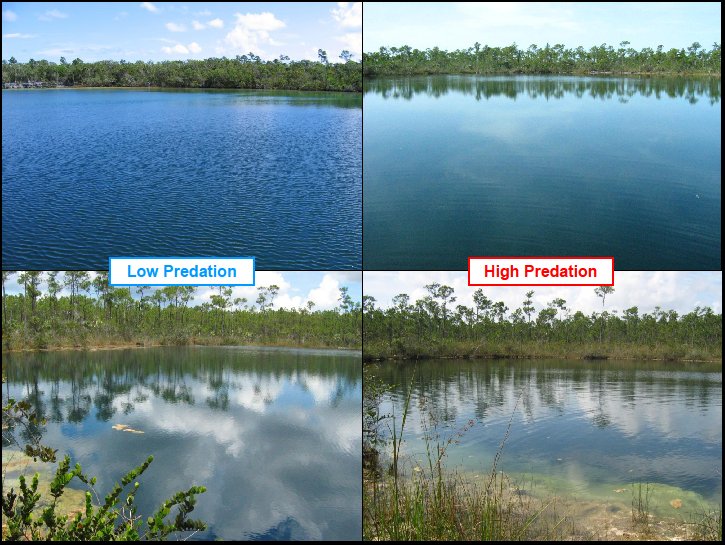|
Ecological speciation is the evolution of barriers to gene flow resulting from ecologically-based divergent selection. Research in the lab investigates various aspects of the causes, consequences, and frequency of ecological speciation in nature.
The simplest model of ecological speciation describes adaptation to divergent selective regimes, which incidentally results in reproductive isolation as a by-product. Theory suggests that divergent natural selection between environments might often result in speciation as a by-product (even before reinforcement can occur), however only a handful of promising examples from nature have so far been revealed. In the lab, we investigate speciation via this by-product mechanism in Gambusia fishes, and examine the importance of resource competition, predation, mating behaviors, and the evolution of "magic traits" (i.e., traits experiencing divergent selection that also happen to enhance sexual isolation).
A focus of our research involves studying ecology’s role in incipient speciation for a post-Pleistocene radiation of Bahamas mosquitofish (Gambusia hubbsi) inhabiting inland blue holes on Andros Island, the Bahamas. In some of the blue holes these fish have evolved in the absence of any predatory fish (Low Predation), while in others they have coexisted with piscivorous fish (High Predation) (see figure top right).
Our research has revealed that adaptation to divergent predator regimes is driving ecological speciation as a by-product. Divergence in body shape (see figure to the right), coupled with assortative mating for body shape, produces reproductive isolation that is twice as strong between populations inhabiting different predator regimes than between populations that evolved in similar ecological environments. Gathering analogous data on reproductive isolation at the interspecific level in the genus, we have also found that this mechanism of speciation may have been historically prevalent in Gambusia. This suggests that speciation in nature can result as a by-product of divergence in ecologically important traits, producing interspecific patterns that persist long after speciation events have completed. Thus, the microevolutionary processes observed in the blue holes (incipient speciation driven by predator regime) might play a major role in generating broader macroevolutionary trends in the Gambusia genus.
Some of the current questions we are addressing in the blue-hole system involve the sexual selection mechanisms underlying sexual isolation among populations, ecological factors other than predation underlying divergent selection, and the nature of the pathway of ecological divergence --> phenoptyic divergence --> speciation.
|



